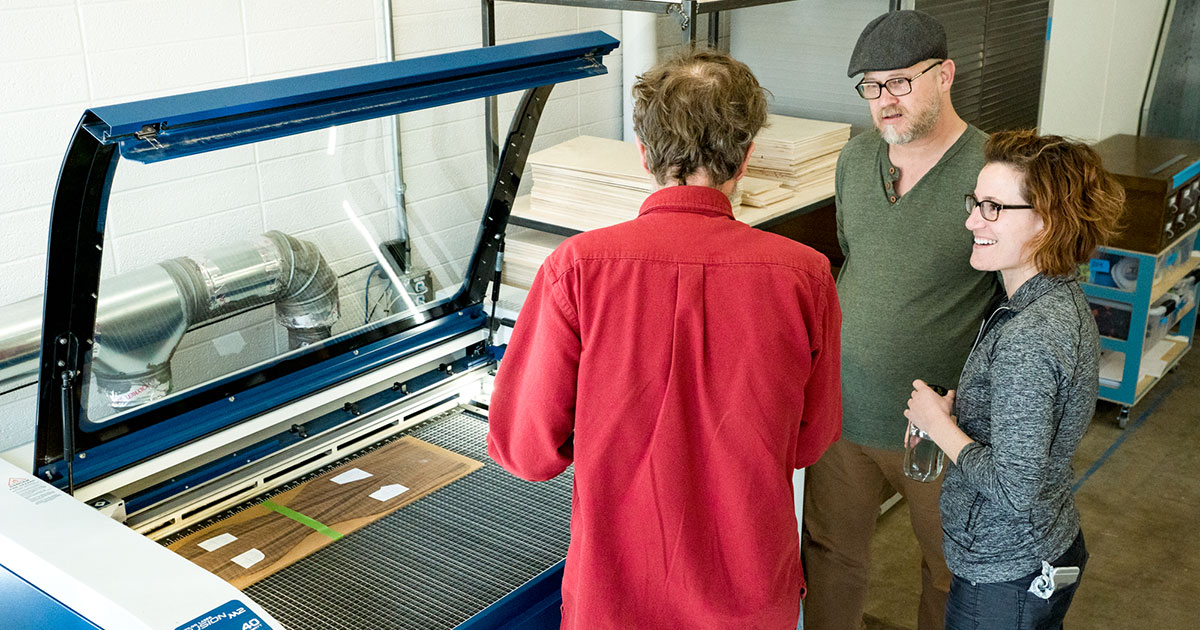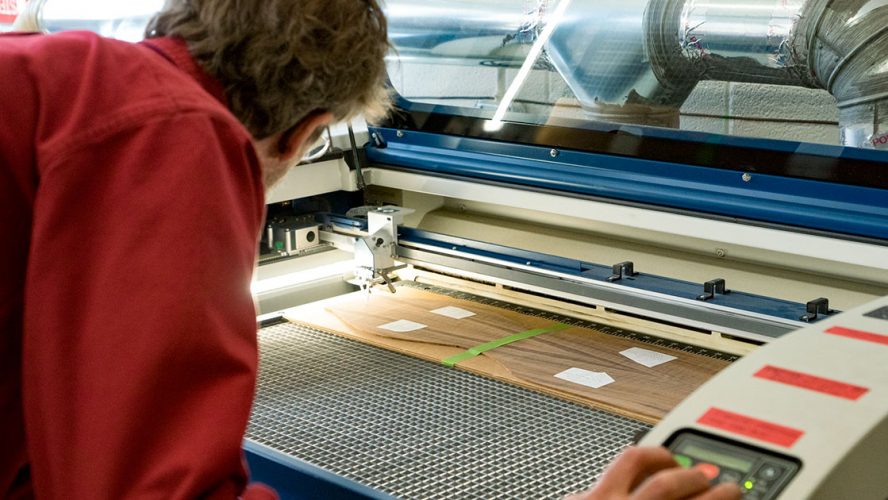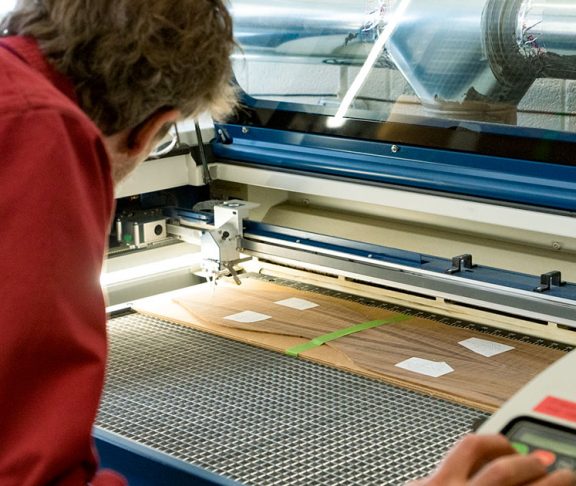From elementary school to middle school to high school and well beyond, lasers are very quickly becoming a popular tool in the 21st century STEM classroom.
John Barrow discovered laser printing while attending a STEM guitar-building conference. “I saw them using these lasers to put designs on guitars,” he told the Brockway (Penn.) Courier Express. “I thought, ‘Wouldn’t it be nice to have one of those in my shop?’”
Barrow introduced the Epilog Laser Fusion M2 into his classroom at Brockway Area Junior-Senior High, where his students are using the laser printer to create anything from etched glass paperweights to wooden signs, and yes, to decorate guitars.
A versatile tool
Lasers are easy-to-use tools that can perform a variety of applications both inside and outside the classroom. Students use the laser to turn intangible ideas into real products that require many of the critical thinking skills students learn in STEM, such as designing, engineering, measurements and mathematics.

Lasers make for their own science lesson. Epilog’s CO2 lasers are powered by a laser tube filled with different gases, which are stimulated by RF waves that create electricity in the form of light. This light is the laser that is directed by mirrors at each end of the laser system. Once amplified, the targeted laser can vaporize the surface.
Complementing STEM
In engineering and design courses, students can laser cut parts and pieces to create real-life prototypes, while in photography and graphic courses, students process artwork for engraving on a variety of materials and see how the same image differs on each surface. Woodworking classes, for example, combine different technologies, like the laser and a CNC router, while using math for measurement and design factors, to create furniture.
The science and technology behind laser cutters allow students to take their ideas and designs and turn them into finished pieces.
To learn more about lasers educators can download this educational guidebook.
Sue Poremba, [email protected]


